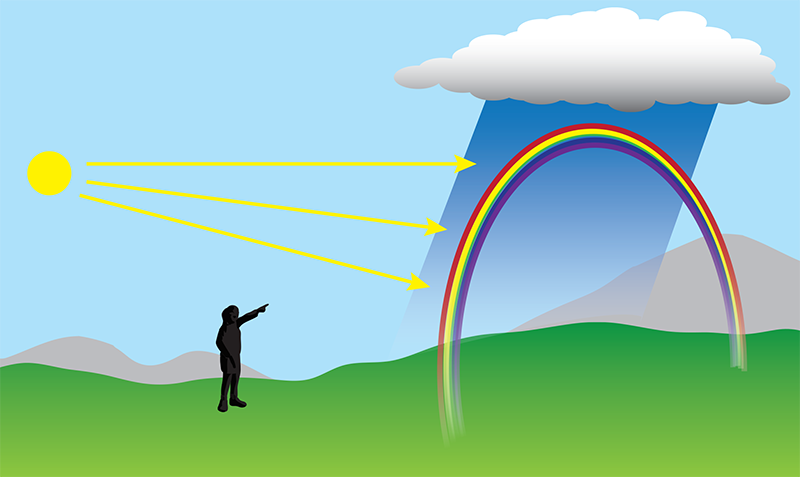How Do Rainbows Form?
https://scijinks.gov/rainbow/#:~:text=A%20rainbow%20is%20caused%20by,droplet%2C%20it%20makes%20a%20rainbow.
Rainbows typically appear after a rainstorm and the sun shines and a rainbow appears, but the process is much more detailed than that. A rainbow is caused by sunlight and atmospheric conditions. When light goes through water droplets it slows down and bends, it goes from air to dense water. The light reflects off of the inside of the water droplet, separating into different wavelengths – the colors in the rainbow shown. When light leaves the droplet it turns to the the rainbow you see.
A rainbow doesn’t have a specific place it appears, it appears when sunlight and the atmospheres conditions are perfectly matched up. For a rainbow to appear there needs to be water droplets in the air, which is why it needs to be possibly during, or after a rainstorm/when it rains. The sun has to be behind you and the clouds must be out of the sky from the sun. Soon after, a rainbow forms!
Did you know that a full rainbow is actually a full circle? From the ground we just don’t see the other half of it. If you were in an airplane though, at the right conditions and perfect angle of the airplane, you could see the whole thing.

Sunlight is made with many wavelengths or colors of light. Some of the light bends more then others when entering the water droplets, causing different colors to show in the rainbow. Violet (the shortest wavelength of visible light) bends the most, causing it do be the last color. Red has the longest wavelength (bending the least,) is the reason why its first. From red having the longest wavelengths, the wavelengths from the colors get shorter and shorter, stopping at violet. When the light leaves the water droplet, it is all separated into wavelengths. The light reflecting back to you- the sun is behind you- the raindrops appear separated into the colors of the rainbow.
Sources:
https://www.popsci.com/how-rainbows-form/
https://www.scientificamerican.com/article/why-do-rainbows-form-inst/











